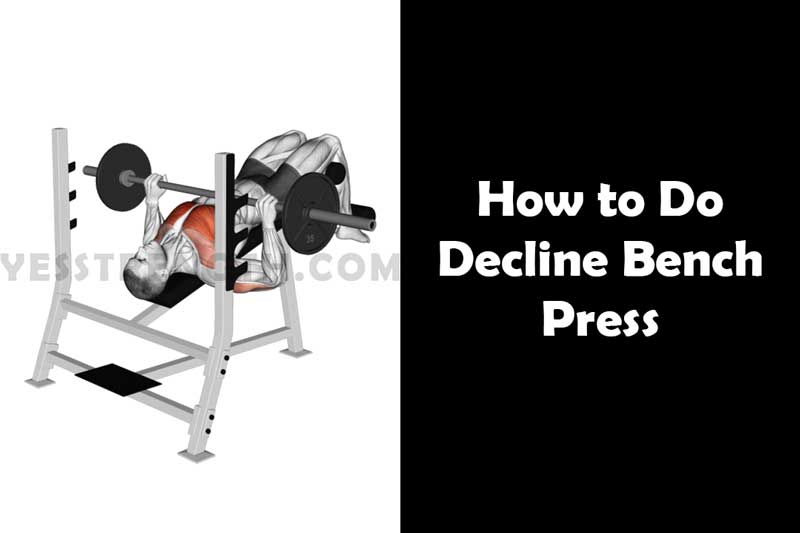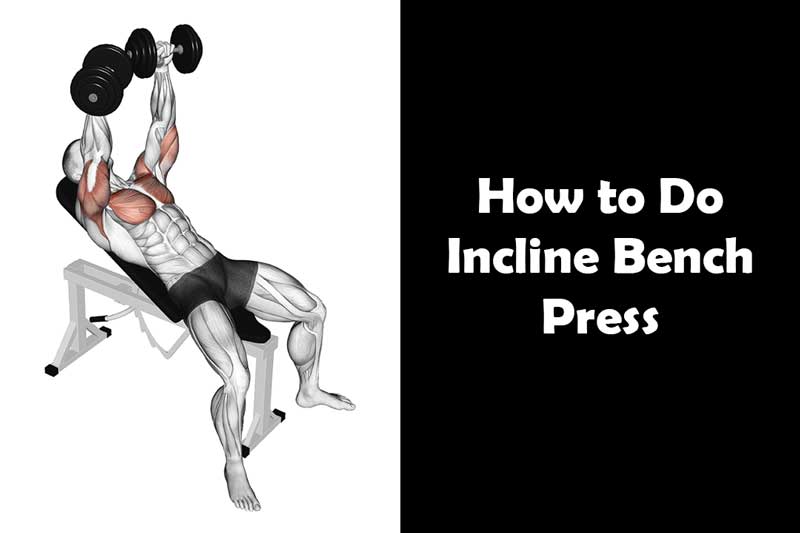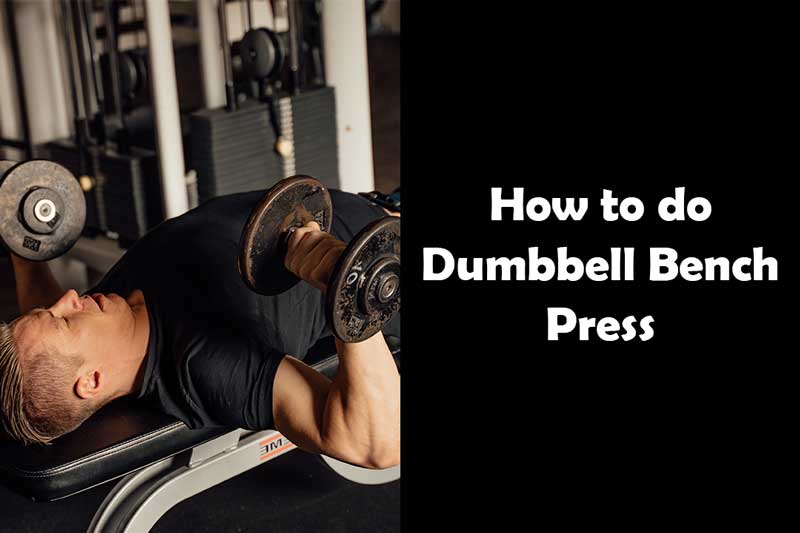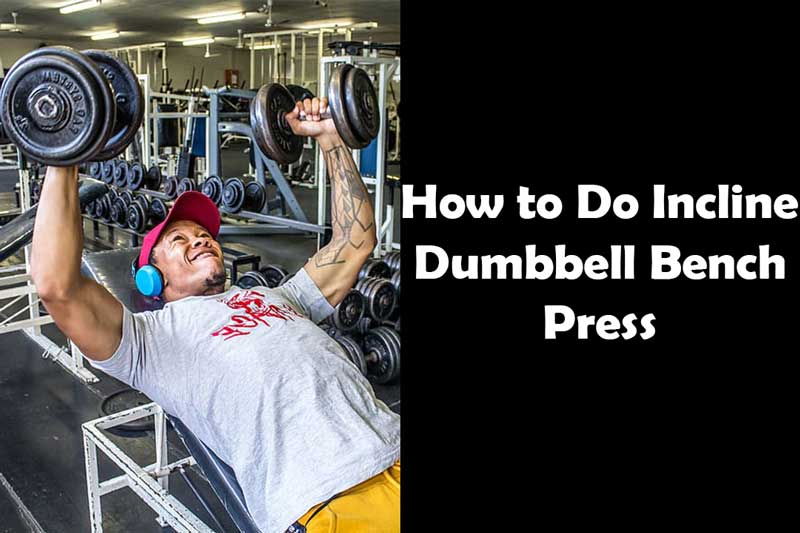If you’re looking to target your lower chest muscles and add variety to your chest workout routine, the decline bench press is an excellent exercise to consider.
It is often tough to get the lower chest in shape. And for that lower chest exercises are very important, one of the best among the lower chest exercises is decline bench press.
In this article, we will provide you with a step-by-step guide on how to perform the decline bench press correctly, highlighting its benefits and offering tips for maximizing your results. So, let’s get started!
What is Decline Bench Press?
The decline bench press is a popular exercise that primarily targets the lower pectoral muscles, along with the triceps and front deltoids.
By performing this exercise on a decline bench, you change the angle of the movement, placing more emphasis on the lower chest area. This variation helps in developing a well-rounded and sculpted chest.
Benefits of Decline Bench Press
The decline bench press offers several benefits, including:
1) Increased Lower Chest Activation
Performing the decline chest press activates the lower chest muscles to a greater extent compared to the flat or incline chest press. This exercise helps in building a stronger and more defined lower chest region.
2) Enhanced Strength and Muscle Development
Incorporating decline chest press into your training routine can lead to overall strength gains and increased muscle development in the chest, triceps, and front deltoids. It provides a challenging workout for your upper body.
3) Improved Upper Body Functionality
By strengthening the chest muscles through decline chest press, you can enhance your upper body functionality and performance in other compound exercises such as push-ups, shoulder presses, and chest presses.
Muscles Worked During Decline Bench Press
The decline chest press primarily targets the muscles in the lower chest region. However, it also engages several other muscles, contributing to a well-rounded upper body workout. Let’s take a look at the key muscles worked during the decline chest press:
1) Pectoralis Major (Lower Chest)
The decline chest press places a significant emphasis on the lower portion of the pectoralis major, which is responsible for chest muscle development. This exercise helps in sculpting and strengthening the lower chest muscles, adding definition and size.
2) Triceps Brachii
The triceps muscles located on the back of the upper arm are heavily involved in the decline chest press. They assist in extending the arms during the upward phase of the exercise, supporting the movement and providing stability.
3) Anterior Deltoids (Front Shoulders)
The front portion of the shoulder muscles, known as the anterior deltoids, are activated during the decline chest press. They assist in stabilizing the movement and contribute to the pressing motion.
4) Serratus Anterior
Located on the sides of the ribcage, the serratus anterior muscles are engaged during the decline chest press to stabilize the shoulder blades and provide support throughout the exercise.
5) Traps (Trapezius)
The upper portion of the trapezius muscles, located in the upper back and neck area, also come into play during the decline chest press. They help in stabilizing the shoulder blades and maintaining proper posture throughout the movement.
6) Rhomboids
The rhomboid muscles, situated between the shoulder blades, assist in stabilizing the shoulder blades and maintaining proper scapular retraction during the decline chest press.
While these are the primary muscles targeted during the decline chest press, it’s worth noting that other secondary muscles such as the biceps, lats, and core muscles are also involved to a certain degree to provide stability and support.
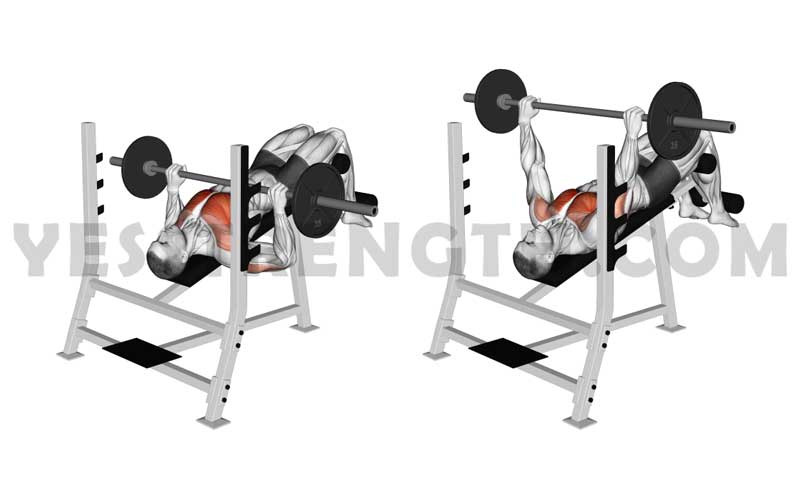
Equipment Required
To perform the decline bench press, you will need the following equipment:
- A decline bench: This bench is specifically designed with a decline angle to support the exercise.
- A barbell or dumbbells: Choose a weight that is suitable for your fitness level.
- Weight plates: Add weight plates to the barbell or dumbbells as per your strength and training goals.
Proper Setup and Technique
Follow these steps to perform the decline bench press with proper form:
- Adjust the decline bench to your desired angle, typically between 15 to 30 degrees.
- Lie back on the bench and position yourself so that your feet are secure and your hips are slightly higher than your head.
- Grab the barbell or dumbbells with a grip slightly wider than shoulder-width apart.
- Lift the weight off the rack or have a spotter assist you.
- Lower the weight in a controlled manner towards your lower chest, maintaining tension in your chest muscles.
- Pause for a brief moment when the weight reaches just above your chest.
- Exhale and push the weight back up to the starting position, fully extending your arms.
- Repeat the movement for the desired number of repetitions.
Variations of Decline Bench Press
Here are some variations of the decline bench press that you can incorporate into your training routine:
1) Dumbbell Decline Bench Press
Instead of using a barbell, you can perform the decline chest press using dumbbells. This variation allows for a greater range of motion and can help in correcting muscle imbalances.
2) Decline Bench Press Machine
If you have access to a decline chest press machine, you can use it to perform the exercise. The machine provides stability and can be beneficial for beginners or individuals recovering from injuries.
Other similar variations include Flat Bench Press and Incline Bench Press.
Common Mistakes to Avoid
To ensure optimal results and prevent injuries, it’s important to avoid the following common mistakes when performing the decline bench press:
- Arching the back excessively: Maintain a neutral spine position throughout the exercise to protect your lower back.
- Bouncing the weight off the chest: Control the descent of the weight and avoid using momentum to lift it back up.
- Flaring the elbows outwards: Keep your elbows at a 45-degree angle from your body to minimize stress on the shoulder joints.
- Using excessive weight: Choose a weight that allows you to maintain proper form and complete the desired number of repetitions with control.
Tips for Beginners
If you’re new to the decline bench press, consider the following tips to ensure a safe and effective workout:
- Start with a lighter weight to focus on mastering the correct form and technique.
- Gradually increase the weight as you become more comfortable and confident with the exercise.
- Incorporate a proper warm-up routine to prepare your muscles and joints for the workout.
- Seek guidance from a qualified fitness professional to assist you in setting up the equipment and providing guidance on form.
Training Frequency and Repetitions
To maximize the benefits of the decline bench press, it’s important to find the right balance between training frequency and repetitions. Here are some general guidelines to consider:
- Aim to perform the decline bench press exercise 1-2 times per week, allowing for adequate recovery between sessions.
- Select a weight that allows you to perform 8-12 repetitions per set with proper form and without compromising your technique.
- Perform 3-4 sets of the decline bench press, adjusting the weight and repetitions based on your individual fitness goals.
Safety Considerations
While the decline bench presses are generally safe when performed correctly, it’s essential to keep the following safety considerations in mind:
- Always warm up adequately before starting your workout to prevent injuries.
- Use a spotter, especially when lifting heavy weights, to ensure your safety and provide assistance if needed.
- If you experience any pain or discomfort during the exercise, stop immediately and consult a healthcare professional.
Nutrition and Recovery
To support your progress and optimize your results, consider the following nutrition and recovery tips:
- Consume a balanced diet that includes an adequate amount of protein, carbohydrates, and healthy fats to support muscle growth and recovery.
- Stay hydrated before, during, and after your workout.
- Allow your muscles to recover by incorporating rest days into your training routine.
- Get enough sleep to facilitate muscle repair and overall recovery.
Conclusion
The decline bench press is a valuable exercise for developing a strong and well-defined lower chest.
By following the proper setup and technique, incorporating variations, and avoiding common mistakes, you can maximize the benefits of this exercise.
Remember to prioritize safety, maintain a balanced diet, and allow for adequate recovery to optimize your results.
Frequently Asked Questions (FAQs)
1) Can women benefit from performing the decline bench presses?
Absolutely! The decline bench presses can benefit both men and women by strengthening the chest muscles and improving overall upper body strength.
2) Is the decline bench press suitable for beginners?
Yes, beginners can perform the decline bench press. However, it’s important to start with lighter weights and focus on mastering the correct form before increasing the intensity.
3) Will the decline bench press help in reducing chest fat?
While the decline bench press can help in building chest muscles, it is not a direct solution for reducing chest fat. To reduce fat in any specific area, a combination of regular exercise, proper nutrition, and overall fat loss is required.
4) Can I perform the decline bench presses with a shoulder injury?
If you have a shoulder injury or any other pre-existing condition, it’s crucial to consult with a healthcare professional before attempting the decline bench presses or any exercise that may aggravate your condition. It is often difficult to perform weighted chest exercises with shoulder injury.
5) Can I substitute the decline bench press with other exercises?
Yes, absolutely you can. While the decline bench press is an effective exercise, there are alternative exercises such as push-ups, chest dips, or machine chest presses that can target the lower chest muscles.
And don’t forget to Say Yes to Strength

